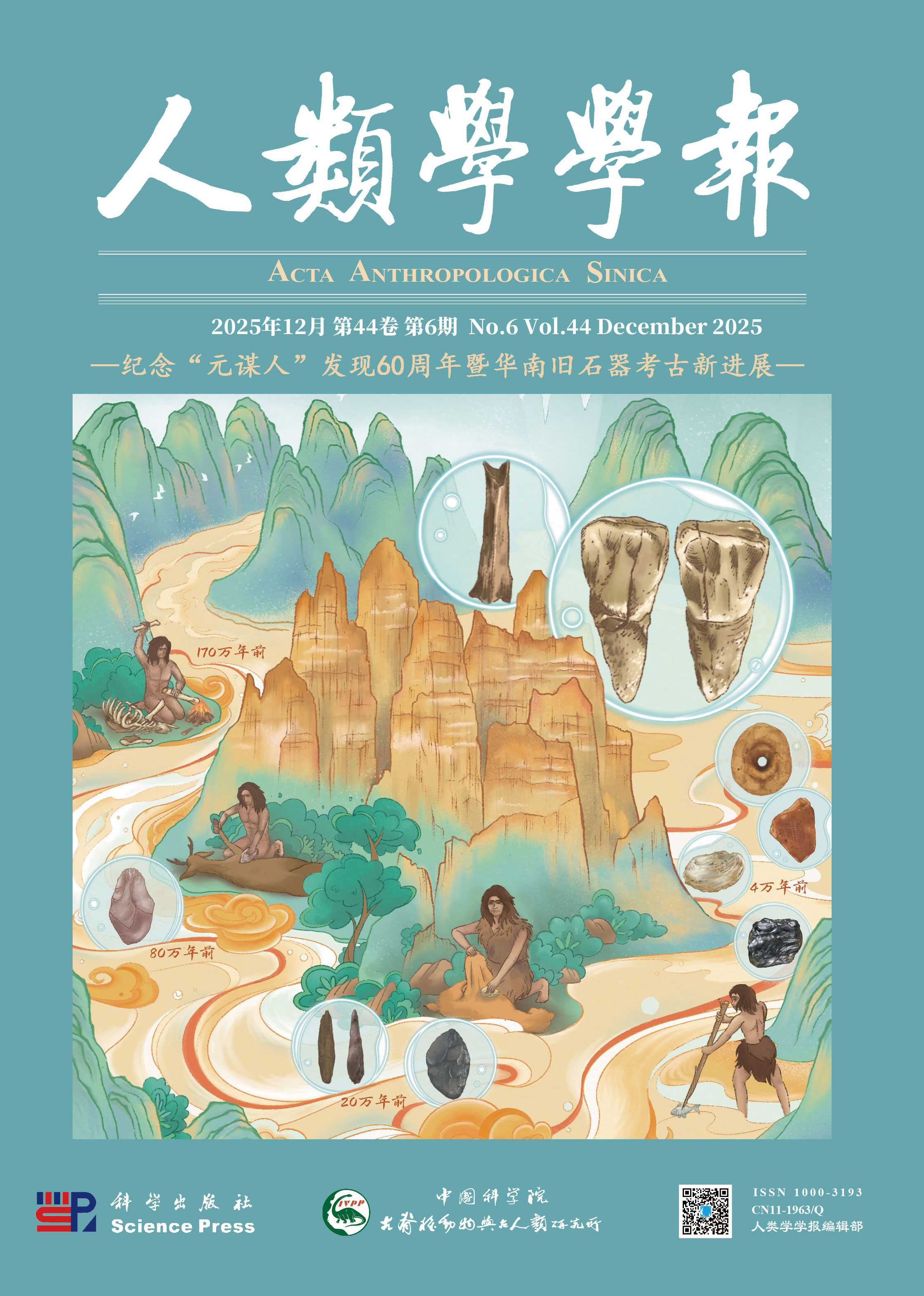The early Pleistocene murid rodents from Juyuan cave of Boyue mountain,
Chongzuo, Guangxi of southern China
WANG Yuan, QIN Dagong, YAN Yaling, JIN Changzhu
2016, 35(04):
561-571.
 Asbtract
(
474 )
Asbtract
(
474 )
 PDF (984KB)
(
198
)
Related Articles |
Metrics
PDF (984KB)
(
198
)
Related Articles |
Metrics
Recently, the large-primate fossil teeth collected from Juyuan Cave of Boyue Mountain, Guangxi Zhuang Autonomous Region of southern China, have been identified as Gigantopithecus blacki. The systematic excavations in Juyuan Cave have unearthed a plethora of higher primate remains, including G. blacki, Pongo weidenreichi and Nomascus sp., as well as other abundant mammalian fossils. The Juyuan fauna, consisting of 45 mammalian species (such as Sinomastodon yangziensis, Ailuropoda wulingshanensis, Stegodon huananensis, and Rhinoceros fusuiensis), is a typical early Pleistocene Gigantopithecus-Sinomastodon fauna of southern China. This paper describes the murid rodents from this cave. There are 6 genera and 8 species, of which 5 species are extinct: Mus cf. M. pahari, Apodemus cf. A. peninsulae, Hapalomys gracilis, Hapalomys angustidens, Niviventer preconfucianus, Niviventer andersoni, Leopoldamys edwardsioides, and Rattus cf. R. pristinus. The morphological comparisons indicate that the murid species from Juyuan Cave are more primitive than those from Sanhe Cave of the middle Early Pleistocene within the same area, but resemble those from Longgupo site, Wushan, Chongqing of the early Early Pleistocene, implying their contemporaneity. Paleomagnetic dating of the fossil-bearing strata in Juyuan Cave gives an age of approximately 1.8 Ma BP. The murids assemblage from Juyuan Cave is mostly made up of arboreal or semi arboreal species within the Oriental realm preferring the forest or grassland environment. Consequently, the paleoecological setting at Juyuan Cave can be reconstructed as tropical-subtropical forest and shrub. The study on murid remains from Juyuan Cave of Boyue Mountain, Guangxi greatly enriches the micromammalian record of the early Pleistocene Gigantopithecus-Sinomastodon fauna of southern China. This new data provide important evidence to understand the division of Quaternary biostratigraphy in southern China.









